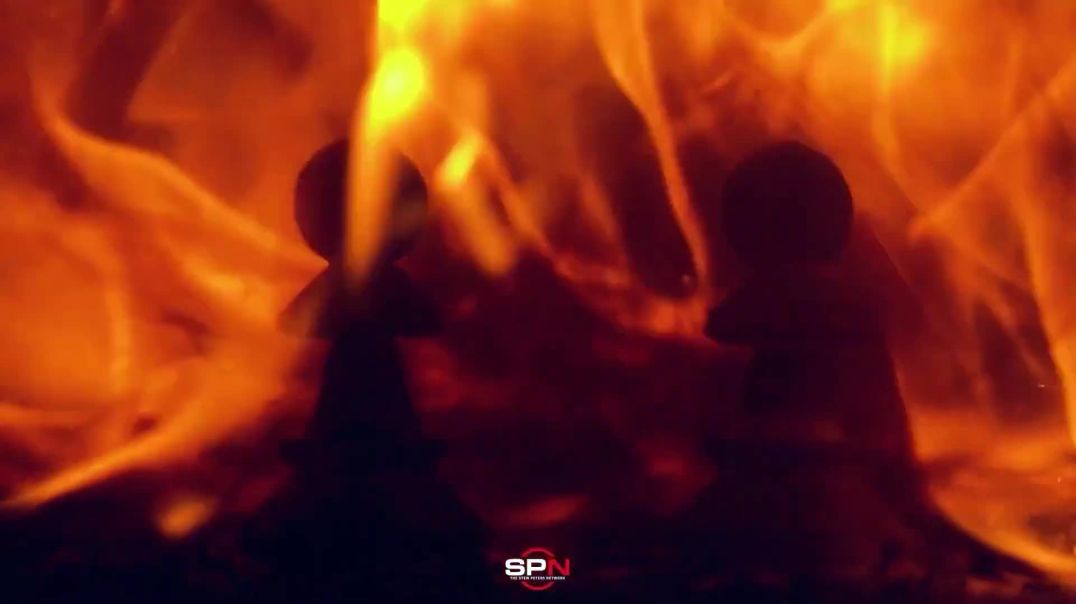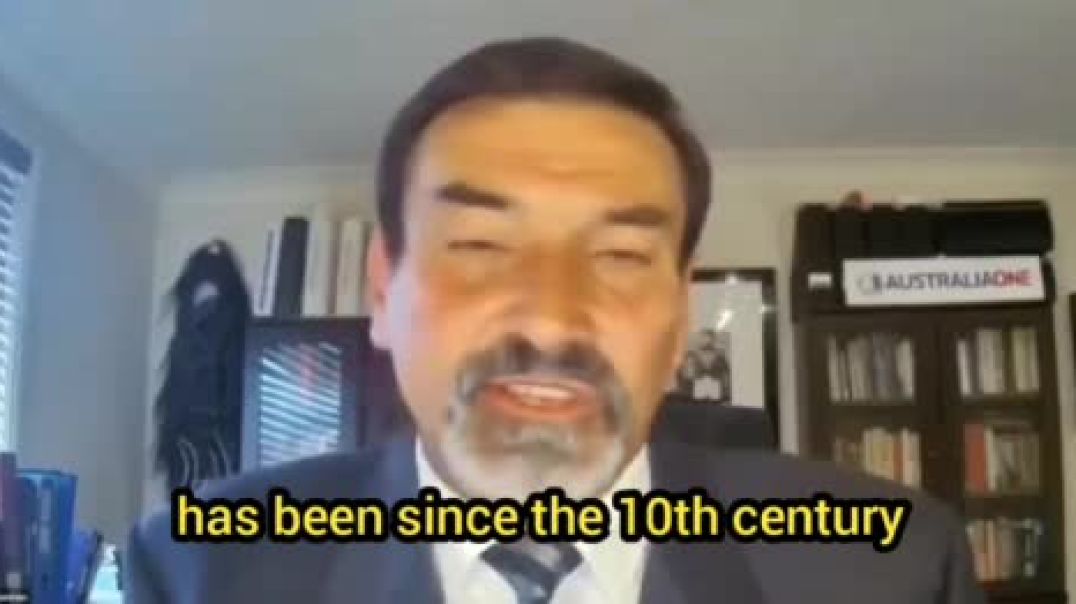Please donate now to help fund our work
The Leo Frank Case - 1913 Part 1 Chapters 1-9
The Frank Case is the story of Georgia's greatest crime thriller, the story of how young Mary Phagan was murdered while collecting paychecks at the National Pencil Factory. Leo M. Frank, the manager of a large factory where a humble little employee died, was arrested and became the Frank case. The story of the case, the major developments over the next four months, and the grand trial in which two of the South's top criminal defense attorneys battled the insight of the Atlanta Attorney General to save Frank were covered in the press. Frank's sentencing in Fulton High Court will finish the job, but new trial motions have been filed and the death penalty, if any, would be months away. The most important details in this document are the events leading up to the trial of Leo M. Frank.
At 3 a.m. on April 27, the body of Mary Phagan is found in the basement of the National Pencil Factory. At 12:00 a.m., the night watchman Newt Lee Negro arrives. Arthur Mullinax is arrested and blood is found in a metal room on the second floor. Coroner Donahue appoints a jury and suspends the investigation. J.M. Gantt is arrested and Pinkerton is ordered to find the hunter. Frank and Lee are taken to the county jail and held there pending the coroner's findings. Attorney General Dorsey joins the case, and Frank recounts his actions on the day of the crime. Paul Bowen is arrested and released after establishing an alibi. Frank and Lee are detained by the grand jury's coroner's board.
Mrs. Frank visits her husband for the first time since her imprisonment. Colonel Thomas B. Felder announces that Detective Burns is working to solve the mystery. May 21 - New York fingerprint expert PA Flack says the results of the investigation are unclear. May 24 - Conley makes a startling confession that Frank had tricked him into writing a note near the body. 5/26 - Burns authorities announced that the investigation was closed.
May 27 - Conley also released a sensational affidavit, stating that he helped Frank move the body of Mary Phagan to the basement. June 3 - Minola McKnight has prepared a sensational affidavit of hearing Frank speak of his strange behavior on the night of the murder. 7 June - Mrs. Frank rebukes Lawyer Dorsey, explaining that the room in which Minola McKnight filed her affidavit was a torture chamber. June 8 - Attorney Rosser accuses Chief Ranford of misconduct in the murder hunt. June 23 - Attorney Dorsey determines that night watchman Newt Lee was awakened by the clock on the second floor of the National Pencil Factory.
A shadow in the corner dances toward him as he holds his hand to warm the glass of the lantern. The light of the lanterns reflected the dial of a large clock that chimed every half hour. Soon Newt will be able to patrol abandoned factory buildings, strike clocks, and sit down to rest. He was so tired that he thought he needed a rest.
Newt has been a night watchman at the factory for months. He is tired, but his caretaker, Mr. Frank, has given him rest for most of the afternoon. As he approaches the bottom of the stairs, he mutters to himself as he throws the light of his lantern back and forth across the empty first floor. Haya comes down at 03:00. At 6:00, Mr. Frank told him to slow down and not come back until 6:00. Newt calmly looks around his ground floor, as usual. There were no busy workers, no men eager to pack pencils, no dozens of little factory girls crouching at the machines. He likes machines because for a night watchman, silence in everyday life means safety. Going to another floor, he will fill the basement, the darkest darkness. Newt Lee raised the trapdoor over the water, and a faint glimmer of light shone through. His lantern flickers with light, faintly illuminating the dim light of the basement. Each time he circles, he raises his leg carefully, while his lantern moves the light back and forth, faintly illuminating the dim light of the basement. His feet were planted on the ground, and as he stood on the subterranean floor, the lantern emitted a yellow light. He takes three steps and stops. Lights came on, illuminating stacks of clothing and things Newt had never seen before. His heart raced and he tried to laugh, but his voice was hard and raspy in the silence. Taking another step forward, Newt Lee staggered back as the lantern flashed again. He saw something as blood-stopping as a dam of ice and climbed the ladder, jumping and sobbing. The same clock chimed as Newt patrolled the factory buildings. Welcome hour meant that the office's big press would print out pages and pages for the townsfolk to pass the Sunday hours between breakfast and church. They arrived on a foggy, misty Decatur Street, freed from the throngs of happy, laughing blacks that had packed in a few hours earlier. Britt was in Boots Rogers' car, and the third reporter remained in the car. In the station building, staff members sat on chairs and spent the rest of the day until dawn. A thin speck of light appeared on the eastern smoke-shrouded horizon, and the hands of the station's clock were pointing to 45 minutes. Police officers charged with disorderly conduct heard a black man sob in a cell behind the station early in the evening. The sergeant yelled at the burly man near the door, whose chevron crest proclaimed him in front of the detachment. When the phone rang, Mr. Boots' deputy, Mr. Rogers, opened his mouth and began an impassioned account of the Grace case. Officer W. T. Anderson got up tired and went to the phone booth door and opened it.
His officer brethren looked up in a moment of interest, but then returned to their seats. Then he got a message from a black man many blocks away. The Negro was speaking in a trembling voice about the dead girl found in the basement of the National Pencil Factory on Forsyth Street. When Officer Anderson burst out of the phone box with a message, the sleeping officers jumped and woke up. They jumped in the car, woke the sleeping reporters, and drove to the corner of Prior and Decatur Streets. Two men, police officers Dobbs and Brown, stood at the corner. The car slowed down and the four men got out. Officer Anderson was banging on the door with his fist clenched, Newt Lee's frightened face staring at them. They fired at him and entered the dimly lit gates of the factory. Lee was in front, Anderson right behind him, clutching his revolver. Newt Lee led them down a ladder into the darkness, pointing anxiously at something in the corner. Officers crouched to see the frightened, mutilated corpse of a girl with her head forward and her legs angled into the right rear corner. Her face had bruises and she was black with dirt. When the men bent down to investigate further, the most important detail in the document was the discovery of two dirty yellow pieces of paper on which someone had scribbled vulgar writing. Officers read a note written by Lee, a tall black man, and his mother as they pushed him into the pit. Anderson suddenly turned to the security guard, tapped him on the shoulder with a rude hand, and accused Nigger of doing this. Officers then contacted Ms. Brown, who had thoroughly searched the basement, and found the girl's other pair of slippers. Officers later found two dirty yellow pieces of paper on which someone had scribbled rude letters. Anderson suddenly turned to the security guard, tapped him on the shoulder with a rude hand, and accused Nigger of doing this. Newt Lee was arrested on suspicion of murder on Sabbath morning and taken to a police building to identify the dead child. Grace Hicks, who lived at 100 McDonough Road, traveled with Rogers to the P.J. Bloomfield morgue to see Mary Phagan's dismembered body. Detective Stearns calls the property manager, Frank, and tells him that something happened at the factory and that he's going to pick him up. With the police and CID busy at the scene, Detective Stearns called his home supervisor Frank to tell him that something had happened at the factory and that he would come pick him up. Rogers and Detective John Black drive to Frank's house to ask if anything happened at the pencil factory.
Frank was dressed up except for his collar and tie and seemed extremely nervous. On the way, Black asks Frank if he knows a girl named Mary Phagan, and the factory manager tells him to check the factory payslip. On their way to the factory, the three stop at a funeral home to see the body of Mary Phagan. By sunrise word of the murder had spread through town and a few men, including N.V Darley the plant manager, were standing outside the factory gates.
Frank greeted the foreman and officers and went to Frank's office. When the superintendent opened the safe, he found a blank book bearing the name of Mary Phagan. Frank then asked if there was any evidence of wage rotation in the factory. The next request was to see where the girl's body was found. Frank went to the control box next to the elevator, unlocked it, and switched on the machine. Back on the first floor, someone suggested that we all go to the station building, where Frank took the key out of his pocket and suggested that we open the locked door on the right. Boots Rogers later testified that Frank took the key out of his pocket, unlocked the right side, and took out the Timeslip. An important detail in this document is that Frank found a pencil in one of the potholes and asked Lee why he was there. Frank then unlocks his watch and writes April 26, 1913 on the margin of the slip, while at the police station Frank sits on Darley's lap, shaking violently. At the police station, Frank spoke of a visit to the factory by a young man named J.M. Gantt on Saturday morning. Gantt was a young man who had just been laid off from the factory and returned in the afternoon to pick up the shoes he had left behind. . Based on this statement, the Criminal Investigative Division launched a search for Gantt. Newt Lee was in custody at Frank's home while detectives were looking for multiple suspects. Mary Phagan was a factory girl who worked hard from morning till night. On Memorial Day, she drove into town to see the Confederate Veterans Parade on Peachtree Street.
She took the tram into town and met George Epps, a newspaperman who had always liked her. She promised to meet him at 1:00 p.m. and saw boys in gray march down Marietta and Forsyth streets. Later that night, George Epps ran to the Phagans to find out why Mary had not met her as promised. Mary's stepfather, J.W. Coleman, went into town to see if she could find Mary where she may have been to the Beauty Theater with a few friends.
The audio file's most important detail is the events leading up to Mary Coleman's death. Mr. Coleman went to Bijou and watched her face stream past, but he never saw the face of the little girl he was looking for. He returned to her home at 146 Lindsay Street and comforted her mother, who was grieving at the thought that Mary had gone to Marietta to visit her grandmother. In the early hours of Sunday, April 27th, there was a knock on the door of the Phagan family, and her mother's heart told her it was a message from Mary. Her neighbor, Miss Helen Ferguson, was standing at the door, her eyes filled with sorrow, her lips barely able to utter the terrible words she wanted to say. The news reached the Phagan family, and Mr. Coleman rushed into town to see the body of the girl who had become more than just a daughter to him. At Bloomfields, undertaker Will Giessling showed her body, which the old man positively identified. This scene later saw hundreds of people staring at the empty walls of the pencil factory. Mary Phagan was murdered in the basement of the National Pencil Factory in Atlanta, Georgia, on April 29. Her remains were buried in an old family cemetery in Marietta, Georgia, 32 miles from Atlanta. On May 7, the body was exhumed by order of the public prosecutor and a thorough examination of the stomach and other vital organs was carried out by doctors. H.F. Harris was implemented by the State Board of Health. The mystery surrounding the murder of Mary Phagan and her brutal crimes caused a sensation and remained a mystery for months, not just the required nine days. Mary Phagan's name was on everyone's lips, and more and more newspapers were published on Monday morning, the day after the murder. Atlanta police were inundated with rumors leading to the discovery of the killer. The first wave of public opinion unanimously blamed Newt Lee, but reports of other suspects led to the arrest of Arthur Mullinax, a former tram conductor and alleged friend of the dead girls. Mullinax was arrested based on the testimony of C.J. Camper Food Company employee E.L. Sentell. Sentell said he had known Mary Phagan for years and was convinced that the girl he had seen on her street was her. Mullinax was briefly arrested by police and taken to the police station late Sunday evening. A key detail in this document is the arrest of two suspects, J.M. Gant, Lee, and Mullinax. It was known that Mr. Gant knew Mary Phagan and had been at the factory on Saturday afternoons. He had worked at the factory before and was familiar with the building. Gant's sister, Mrs. F.C. Terrell was found at his home at 284 East Linden Street by police officers who gave conflicting accounts of his actions. The officers decided they were on the right track and arrested Mr. Gant on a warrant for the murder of Mary Phagan. Gant was taken to Atlanta and joined Lee and Mullinax at the station building.
The two police officers emerge on Decatur Street, freed from the crowd of happy, laughing blacks that had swarmed them hours earlier. They found Britt in Boots Rogers' car, while a third reporter remained in the car. In the station building, staff sit on chairs and doze off, spending the rest of the day until dawn. A thin smudge of light appears on the eastern smoke-shrouded horizon, the hands of the station clock pointing to his 45 minutes. Officer Anderson receives a message from a Negro who tells him about the dead girl found in the basement of the National Pencil Factory on Forsyth Street, blocks away. Anderson rushed out of the phone booth with the news, waking the sleeping cops to their feet. In case of emergency he machine will arrive in less than a minute. Police Dobbs and Brown were seen standing at the corner of Prior and Decatur Streets as the National Pencil Company car approached. As the four got out of the car, Officer Anderson clenched his fists and banged on the door. Newt Lee led them down a ladder into the darkness, pointing anxiously at a dead body in the corner. The police found her hair ragged, a bloody black hair from a severe blow to the back of her head, an unmistakably Caucasian hair, the blue ribbon she tied was faded and stained, and blood on her lavender silk dress. I saw it covered in A small white slipper was still attached to her right foot. The most important detail of this document is the discovery of two dirty yellow pieces of paper on which someone had scribbled jumbled letters. These letters were written by tall black blacks, hired by tall black blacks. Officers then read the note aloud, revealing that the man who wrote it had committed this hellish act. Officers later found the girl's other pair of slippers, a small thin hat, and two dirty yellow pieces of paper on which someone had scribbled rude letters. Newt Lee was arrested and taken to a police building where the deceased child was identified. The sentence concludes by stating that an investigation into the killing of a small factory worker has been launched.
The two policemen emerge on Decatur Street, freed from the crowd of happy-laughing blacks that had swarmed them hours earlier. They found Britt in Boots Rogers' car, while a third reporter remained in the car. In the station building, staff members are dozing off in chairs for the rest of the time until dawn. A thin smudge of light appears on the eastern smoky horizon, the hands of the station clock pointing to his 45 minutes. Officer W. T. Anderson receives a message from a black man that a young girl has been found dead in the basement of the National Pencil Factory on Forsyth Street several blocks away.
The sleepy officers jumped and woke up when Officer Anderson burst out of the phone box with a message. In case of emergency he machine will arrive in less than a minute. Officers Dobbs and Brown were seen standing at the corner of Prior and Decatur streets as the National Pencil Company car approached. As the four got out of the car, Officer Anderson clenched his fists and banged on the door. Newt Lee led them down a ladder into the darkness, pointing anxiously at a dead body in the corner.
The officers saw her hair ragged, blood-blackened by a severe blow to the back of her head, an unmistakably Caucasian hair, the blue ribbon that tied it faded and stained, and a lavender-colored silk dress. was covered in blood. A small white slipper was still attached to her right foot. The most important detail of this document is the discovery of two dirty yellow pieces of paper on which someone had scribbled jumbled letters. These notes were written by tall black blacks hired by tall black blacks. When a police officer read the note, it turned out that the man who wrote it had committed this hellish act. Officers later found the girl's other pair of slippers, a small thin hat, and two dirty yellow pieces of paper on which someone had scribbled rude letters. Shortly after Newt Lee's arrest, Newt Lee was taken to a police building to identify the dead child.
Deputy Rogers told officers that he knew a girl who worked in a pencil factory and could probably look at the murdered child and guess who it was. Grace Hicks, who lived at 100 McDonough Road, accompanied him to P.J. Bloomfield's mortuary where his body was laid. Detective Stearns called the caretaker, Frank, and asked him to bring his coat and come with him. On the way, Black asked Frank if he knew a girl named Mary Phagan, and the factory manager said he would check the factory payslips.
On their way to the factory, the three stop at a funeral home to see the body of Mary Phagan. Frank was asked if he knew her girlfriend, and he replied that she could always be found by going to the factory. As the sun rises, the three approach the factory, where news of the murder spreads throughout the city. Among them is N.V. Darley, the factory manager who asked Frank to inform his wife before leaving home. Frank greeted the foreman and entered Frank's office with the supervisor and officers. When the superintendent opened the safe, he found a blank book bearing the name of Mary Phagan. Frank then asked if there was any evidence of wage rotation in the factory. The inspector's next request was to investigate the place where the girl's body was found. Frank went to the control box next to the elevator to unlock it, turned on the machine and the elevator began to descend. After touring the basement where the body was found, the group returned to the second floor. Frank is said to have known Darley for a long time and said that if he could get anything out of him, it would be Darley. When we returned to the first floor, someone asked us to get off at the station building. Frank turned to Darley and asked him to put a new note on his watch. Boots Rogers testified that Frank said little about the murder and watched the scene where Mary Phagan was found dead. The foreman agreed when I told Darley about the new error in the watch. Then Frank took the key out of his pocket, opened the locked door on the right, and took out the Timeslip. He examined the notes, found a pencil in one of the holes, and asked Lee why it was there. The Negro, he said, put a pencil there so he wouldn't make a mistake by drilling the correct hole. Frank unlocked his watch and penciled in "26." April 1913" is written at the end of the note. Frank and the cops board Roger's plane to the police station, where Frank sits on Darley's lap. At the police station, Frank nervously jumps out of the car and speaks quickly and softly. Frank talked about how J.M. Gant, a young man who had just been laid off from the factory, visited the factory on Saturday morning and returned in the afternoon to pick up the shoes he had left behind. Based on this statement, the Criminal Investigative Division launched a search for Gant. Newt Lee was in custody at Frank's home while detectives were looking for multiple suspects.
Mary Phagan was a factory girl who worked hard from morning till night. On her Memorial Day, she drove into town and at the factory she received a wage of $1.20. She took the tram into town and met George Epps, a newspaperman who had always liked her. They were in the car together and Mary promised to meet him at 1:00 a.m. At 12 o'clock that night, George Epps ran to the Phagan household to find out why Mary had not met as she had promised. J.W. Mary's stepfather, Coleman, went into town to see if he could find Mary where she may have been to the Beauty Theater with a few friends. Mrs. Coleman's husband, Mr. Coleman, went to Bijou and watched the people pass by, but never saw the face of the girl he was looking for. He returned to her home at 146 Lindsay Street and comforted her mother, who was grieving at the thought that Mary had gone to Marietta to visit her grandmother. In the early hours of Sunday, April 27, there was a knock at Phagan's door, and her mother's heart flew to her threshold, telling her it was a message from Mary. Neighbor Helen Ferguson stood in the doorway. Her eyes were filled with sorrow, and her mother was heartbroken. The news reached the Phagan family, and Mr. Coleman rushed into town to see the body of the girl who had become more than just a daughter to him. At Bloomfields, undertaker Will Geesling showed her body, which the old man positively identified. This scene later saw hundreds of people staring at the empty walls of the pencil factory. The document's most important detail is the events surrounding the murder of Mary Phagan, a girl who was murdered in the basement of the National Pencil Factory in Atlanta, Georgia. On April 29, the girl's body was buried in an old family cemetery in Marietta, Georgia, 32 miles from Atlanta. On May 7, her body was exhumed by order of the public prosecutor, and doctors performed a thorough examination of her stomach and other vital organs. H.F. Harris was implemented by the State Board of Health. The results of the investigation were known only to him and his lawyer until he testified on the witness stand almost three months later. This crime has shocked the city of Atlanta like never before. The Grace case was a sensation that lasted for months instead of nine days. The mystery surrounding the murder of Mary Phagan and her brutal crimes caused a sensation and remained a mystery for months, not just the required nine days. Newspapers continued to circulate on Monday morning, the day after the murder, and Atlanta police were bombarded with rumors, most of which they claimed had led to the discovery of the culprit. The first wave of public opinion unanimously blamed Newt Lee, but reports from other suspects led to another man being arrested before the end of the first Sunday.
Mullinax was briefly arrested by the police and placed in a separate cell. Another suspect, J.M. Gantt, was arrested in Marietta on Monday. It was known that he knew Mary Phagan and had been at the factory on Saturday afternoons. Ms. Gant's sister, Mrs. F.C. Terrell, was found by police at her mansion at 284 East Linden Street and gave conflicting accounts of Ms. Gant's movements. Officials then decided they were on the right track.
On Monday morning, Gant was arrested with a warrant for the murder of Mary Phagan. He was taken to Atlanta and joined Lee and Mullinax at the station building. Gant spoke candidly, admitting he was fired from the factory a few weeks ago and returned to Marietta to buy shoes. The morning after his imprisonment, Gant attempted to get out of prison by filing a habeas corpus, but he and Mullinax were released before it could take effect. Both gave clear alibi, according to testimony at a May 1 forensic examination.
Police and investigators were outraged by rumors that the girl had been kidnapped and drugged. Former Atlanta boy Paul Bowen, who knew Mary Phagan, was arrested in Houston, Texas and provided an alibi on May 7, the day after his arrest. Police reportedly received help Monday after the murder, when it emerged that pencil factory officials had asked local Pinkerton detectives to help investigate the murder. On Monday, April 28, the coroner's jury met with coroner Paul Donoghue in a metal-armored pencil factory room. Because of the interesting discovery of blood stains on the floor of a metal room, investigators suspected that Phagan's girl had been murdered there, rather than in the basement where she was first suspected. On Tuesday, April 29, the head of the National Pencil Factory, Leo M. Frank, was taken to a police station and taken into custody on charges related to the murder of Mary Phagan.
Since that day, he has never regained his freedom. The key information in this text is that defendant was born in Paris, Texas in 1884 and moved to Atlanta when he was three months old. He attended public schools in Brooklyn and attended the Pratt Institute in Brooklyn. He graduated from Cornell University in 1902 with a degree in mechanical engineering. After that, he got a job with his B.F. as a draftsman.
A solid company in High Park, Massachusetts. Six months later, he returned to his hometown of Brooklyn and took a job as a test-his engineer and draftsman at the National Meter Company in Brooklyn, New York. He remained in that post until about mid-October 1907, when he came south to consult with some Atlanta citizens about the establishment and operation of a pencil factory in Atlanta. At 11:45 a.m. Newt Lee testified that he had arrived at the factory at 4:00 p.m., he left as Frank told him to. Detectives and police say it was face down, but he testified that he found it face up. J.G. Spear of Cartersville said he saw a girl and a man outside a pencil factory Saturday afternoon. George Epps testified that Mary told her Mr. Frank winked at her and said he was suspicious.
E.L. Sentell testified that he saw Mullinax late Saturday night with a girl believed to be Mary Phagan. R. P. Barrett testified that he found bloodstains near Mary's machine on the second floor, suggesting that she may have started the fight for her life there rather than in the dark basement. Gant and Mullinax were released from custody on Thursday afternoon, and an autopsy hearing was temporarily postponed.
Investigators concluded that little Mary Phagan only made a brief visit to the factory on Saturday afternoon to pick up her paycheck and that she never left the factory, prompting investigators to set her sights on solving the mystery of the girl's death. took a step forward. E.L Sentell admitted that she saw Pearl Robinson, not Mary Phagan with Mullinax. Other witnesses who are said to have seen the girl on Saturday afternoon also came forward and said they may have been wrong. This undergrowth was removed, leading authorities to reasonably assume that Mary Phagan had not left the pencil factory alive.
Newt Lee and Leo Frank were transferred to Fulton County Tower pending an investigation at Police Headquarters. Two suspects, Leo M. Frank and Newt Lee, were taken to the Atlanta Tower because of questions about the legality of their detention under a city warrant. The court rulings that brought the two to the Tower were identical except for the names. Franks read to a Fulton County, Georgia jailer that he was obliged to take Leo M. Frank, a suspect in the murder of Mary Phagan, into custody and hold him in custody pending further investigation. Mary Phagan announced her death. After the release of the two men in the tower and two other former suspects, there seemed little doubt that investigators held the key to solving the mystery. There was, however, another man covered by this law, whose arrest was not well publicized at the time, and the newspapers only wrote one paragraph about it. The man would later shock the world with his most sensational testimony ever before the trial began. James “Jim” Conley, a black cleaner employed at the National Pencil Factory, was arrested at 2:00 am.
At 12:00 p.m. on Thursday, he was detained at the Police Headquarters factory along with elevator boy Snowball on suspicion. The sixth arrest in the Phagan murders was made by investigators at 1:00 am. At midnight Thursday, Conley was seen washing his shirt at the faucet behind the building. He claimed that the stains on his shirt were rust stains and that he had washed it to appear before the coroner's inquest when he was summoned. Deductions and clues flooded the detective agency, and many of Frank's friends personally worked on the case to clear the cloud of suspicion hanging over the famous young detective.
He was a prominent figure within the community and popular among a wide range of friends. He was president of a local Hebrew organization, a church and social work leader, and a college graduate. His friends warmly supported him when he was accused of the death of Mary Phagan. People called officers to tell them what to do, and hundreds of letters poured in from the state and six other states. Two women who dreamed of a murder accurately described the killer. When the detectives showed that they really believed either Frank or Lee was the culprit, the atmosphere reached a climax, and Thursday night promised something ugly. City, county, and even state officials took great care. Governor Joseph M. Brown advised Lieutenant General J. Van Holt Nash to keep in touch with the Georgia National Guard from the 5th Georgia Regiment to prepare the army for emergencies. Colonel E. E. Pomeroy, commander of the 5th Regiment, gathered his men at the Auditorium Armory, a few blocks from the tower where Frank and Lee were in prison, and held them there until late at night. At 11:30 am the soldiers were allowed to return to their homes.
Rumors of mob violence were proven unsubstantiated Thursday until the coroner's jury reconvened Monday morning. On Saturday morning, Attorney H.M. Dorsey held a lengthy meeting with Chief Detective Ranford and Coroner Paul Donoghue, which resulted in more witnesses being called into the investigation and the city and state police uniting in the case. It was decided to work on it. The new Fulton County Grand Jury was heard Monday morning by Judge W.D. Eris swore. The judge reminded the coroner's jury of the need to reconsider the Phagan case before indictment for the murder of Mary Phagan. The first witness called was Leo M. Frank, who remained on the stand for three and a half hours, recounting where he was and what he was doing on the day of the murder.
The only other witnesses questioned that afternoon were Mr. and Mrs. Emile Selig, where the Franks lived. For the first time, Frank testified that, formerly living in Brooklyn, New York, he left Brooklyn in October 1907 and went abroad to return to the United States to work for the National Pencil Company, where he became general director. Frank was responsible for managing material purchases, checking factory costs, ensuring orders were properly entered and fulfilled, and overseeing production in general. He came to the factory as usual on Saturday morning and by noon he was doing his usual routine. No one was in his office when he started copying and shipping orders.
At either 12:10 p.m. or 12:05 p.m., the murdered girl came to pick up the envelope. Frank was processing an order in his office when she showed up and demanded her envelope. He handed her the pay envelope knowing that the employee would collect it.
The most important detail in the audiobook is that the witness, Frank, had a basket of money to avoid going to the vault and did not know Mary Phagan's phone number. After he handed her her pay envelope, he did not look and did not mark her payment on her payslips or other records. The girl walked away and asked if the medal had arrived, but the witness explained that Phagan's child had not worked since Monday due to metal shortages. There was $1.20 in the child's pay bag, part of which was from work the previous Friday and Saturday. Witnesses heard her footsteps disappearing into her hallway and went back to her work without thinking about her. He knew the fake and the child's face, but he didn't know what it was called. He thought her name was written on the outside of her pay envelope, but he identified her by her number. Witnesses said she told the girl she was nearly late when she left and that she didn't put herself on her payroll after she gave the girl her envelope. Then Frank made an astonishing remark. Chips Foreman Frank and Chips Foreman Lemmie Quinn chatted for a bit and left at about 12:20pm.
Frank then went to the fourth floor and found two boys who had worked in the factory, Harry Denham, Arthur White and Mrs. White. He returned to the factory soon afterward and met Lee at the police station the Monday after the murder. Frank said of his conversation with Lee at the police station after Monday's murder, investigators told him to interrogate the black man and extract a confession. Frank left the stand as unfazed by the barrage of criticism and questions he received as he had before testifying. Emile Selig and his wife, Mrs. Josephine Selig, also followed Frank on the witness stand. They testified that they met Frank at dinner on Saturdays and Sundays. An inquest into Mary Phagan's death has been postponed until 9:30 a.m. Thursday morning. Six witnesses testified, including Boots Rogers, Lemmie Quinn, Miss Corinthia Hall, Miss Hattie Hall, and J.L. Hall. Watkins and Daisy Jones. Boots Rogers testified that on Sunday morning, when Mary Phagan's body was found, Frank swapped tapes and watches while police were at the factory, at the time Frank removed his seat from the watch. He said it had been stolen, but he testified that this was clearly the case. must be correct.
J.L. Watkins and Miss Daisy Jones underwent a thorough investigation by the coroner to disprove Quinn's statement that he visited the factory on the day of the tragedy. Rogers described Frank's behavior on Sunday morning when police drove him to his home to take him to the factory. Factory employee Corinthia Hall testified that Frank's treatment of the girls at the factory was irreproachable. J. L. Watkins testified that he mistook Dr. Daisy Jones for Mary Phagan when he thought he saw Mary on the street near her home about 5:00 p.m. Saturday. Detective Harry Scott of the Pinkerton Agency was one of the first witnesses, followed by Assistant Superintendent Schiff of the Pencil Factory.
Scott's most interesting testimony was that one of Frank's lawyers, Herbert Haas, asked him to withdraw from the case for the time being. Detective John Black followed Scott on the witness stand and said he found a bloody shirt at Lee's home Tuesday afternoon after the murder. On Saturday afternoon, Newt Lee was called back to the witness stand and informed that Frank was clearly nervous. Frank was recalled to the witness stand and testified on general questions about elevators, time clocks, Saturday afternoon's work, behavior that night and Sunday morning, and factory precautions. As the witnesses finished their testimony for the afternoon, everyone in the courtroom took a deep breath in the idea that the now-famous Phagan case should be left to a group of men summoned for trial. An autopsy jury in the death of Mary Phagan at the National Pencil Factory is tasked with determining who is guilty of murder. One by one, the six members of the jury walked out the door, and the foreman announced the verdict. The coroner's jury ruled that Mary Phagan's death was strangulation and recommended that pencil factory owner Leo M. Frank and night watchman Newt Lee be detained for a grand jury investigation. Mr. Frank was reading the afternoon newspaper in the tower hallway when a lieutenant approached him and told him that the coroner's jury had recommended that he and Lee be sent to a grand jury for autopsy. An important detail in the document is that Attorney General Hugh M. Dorsey was so interested in the case that he hired a private investigator to conduct an independent investigation into the tragedy.
It was later discovered that Attorney General Hugh M. Dorsey was so intrigued by the case that he had hired a private investigator to independently investigate the tragedy. Attorney General Hugh M. Dorsey was convinced that Frank was guilty and that he had used the detective only to gather evidence against Frank, not to work impartially to solve the mystery. Defendant's friends began to explain that he was being persecuted because of his race. Atlanta Jews firmly believed that Frank was innocent and not as outspoken as Dorsey. The town detectives were adamant that Frank was the killer, but he was open to any leads.
The attorney detectives quit their jobs about ten days later and never showed up in Atlanta again. A few weeks after the coroner placed Frank and Newt Lee in the tower as suspects, he heard a young girl talking on the street corner and met with Mary outside the factory while going upstairs to collect the salary she received from Frank. Rumors circulated that he had been waiting for Investigators eventually located the woman in question and found she had been to the factory the Saturday before the tragedy involving the girl, where she died a week later.
Colonel Thomas B. Felder, a prominent Atlanta attorney who prosecuted a high-profile transplant case at a pharmacy and earned the lasting animosity of South Carolina Governor Cole Breese, has addressed the residents of Bellwood County. announced that he was speaking as follows. He was hired to find and prosecute the girl's murderer where Mary Phagan lived. He said he believes the killer was actually Leo M. Frank, and the Georgians have unraveled the mystery and provided enough evidence to identify and convict Frank and others. He said he needed to hire any detective he could get. They were guilty when Frank was innocent. Felder was a personal friend of William J. Mr. Burns and Mr. Burns had supported efforts to impeach Governor Breese. Felder said that if the public supported him by donating to the foundation, he would have Burns come to Atlanta and start searching for the Factory Girls Slayer.
Subscriptions quickly picked up, and on May 18, he received a Special Counsel. C.W. Toby came to Atlanta to settle the loose ends and smooth things over. The document's most important detail is the allegation that Colonel Felder tried to bribe the GC. February used a stenographer to steal certain affidavits and documents in the Phagan case. Secretary Ranford accused Colonel Felder of trying to bribe the GC. February used a stenographer to steal certain affidavits and documents in the Phagan case. Dictatorship records show Felder was negotiating the purchase of certain affidavits that were to be submitted to the city's Criminal Investigation Department, alleging that the boss and some of his members had engaged in open and proven corruption.
The deal was brokered by a Tennessee adventurer who knew Felder during a transplant examination at a pharmacy. Mayor James G. Woodward was also involved and allegedly approved an effort by Felder to get the goods to detectives. This abuse battle almost devolved into a fistfight when the two principals met in court. The Felder v. Rumford dispute was the result of a grand jury investigation into the high-profile Dictogram case. Felder was indicted for defamation against Ranford, who was also indicted for defamation against Felder, and several publicized attacks on each other were made. This has increased public interest in the crime, making it difficult to quell rumors of an invisible hand at work. On Friday, May 23, a Fulton County grand jury considered a bill indicting Frank for murder. The witness heard on the first day of the session was Dr. P. Barrett found the girl's hair on the second floor of the factory near the same spot as the blood stain.
J.N. Detective Stars and he W. Rogers was one of the key witnesses at the grand jury's second day meeting, even though hundreds of people declared that Frank would never be indicted. Key witnesses from the second session included Harry Scott, Pinkerton, and Miss Monteen Stover. The girl was a new character in the case and a very important witness. She told the grand jury that she entered Superintendent Frank's office at exactly 12:10 p.m. and waited for five minutes without seeing Frank or the officer, just as she was about to collect her paycheck.
The girl did not testify at the coroner's inquest, but investigators admitted they wanted her as a key witness. Shortly after discovering Monteen Stover, Harry Scott of the Pinkertons and John Black of the Metropolitan Police visited Frank in the Tower and asked him if he had left his office between noon and 12:50 on Saturday. Frank replied that he hadn't left the office since Miss Hall until he went up to the fourth floor to tell Arthur White's wife that he had the building locked. The girl's testimony was the only flaw the police found in Frank's story told at her inquest, so the attorney took the testimony very seriously. All the points confirmed by her witnesses turned out to be true. Monteee Stover's story was considered conclusive, and when Scott followed her to the witness stand and spoke of Frank's repeated allegations that he had failed to leave the office within the prescribed period, the grand jury returned the truthful explanation. Five Jews participated in the grand jury, an unusual number for Fulton County, and there were many rumors that the indictment would be blocked before the indictment was returned but even if one vote was cast against the bill, each lawmaker signed the indictment, so that fact never became public. Frank didn't expect to be indicted, so he confidently told his friends that a grand jury would never indict him for the crimes in the Tower cell. He was in charge of virtually all sides of the case and took the news calmly.



















